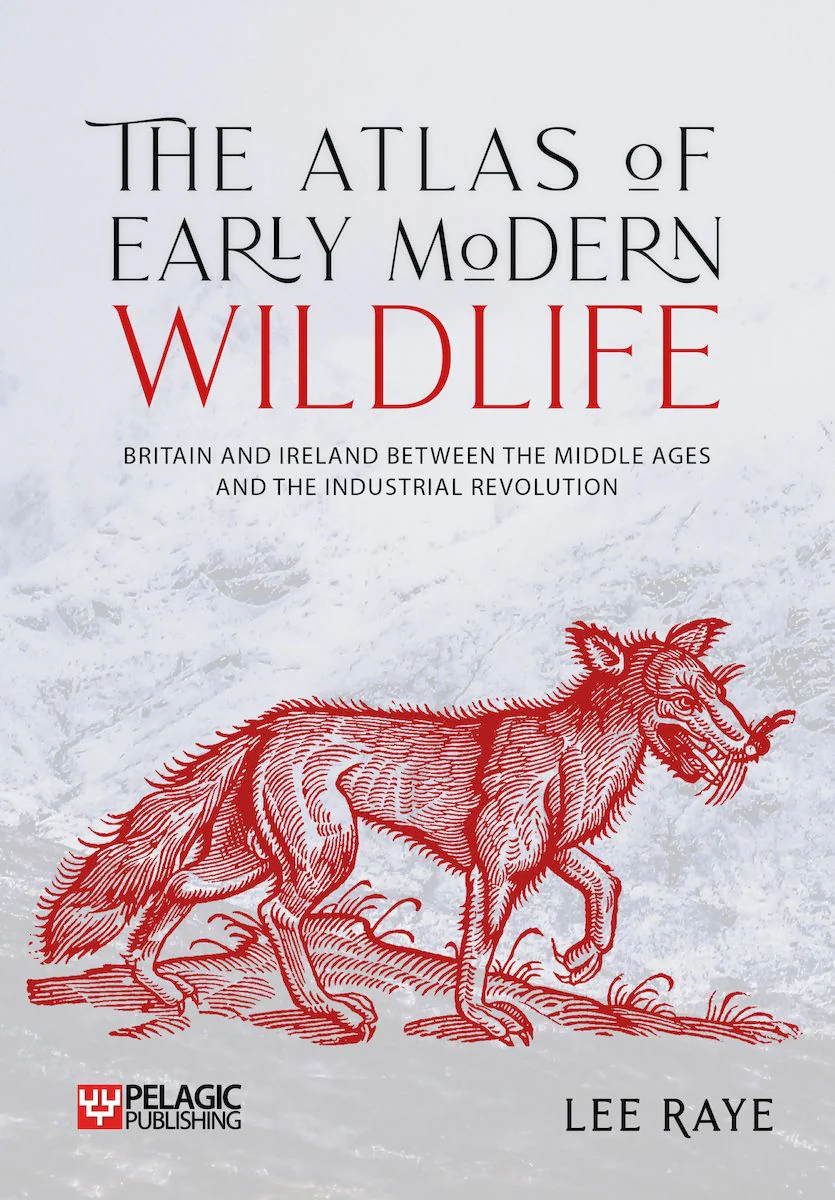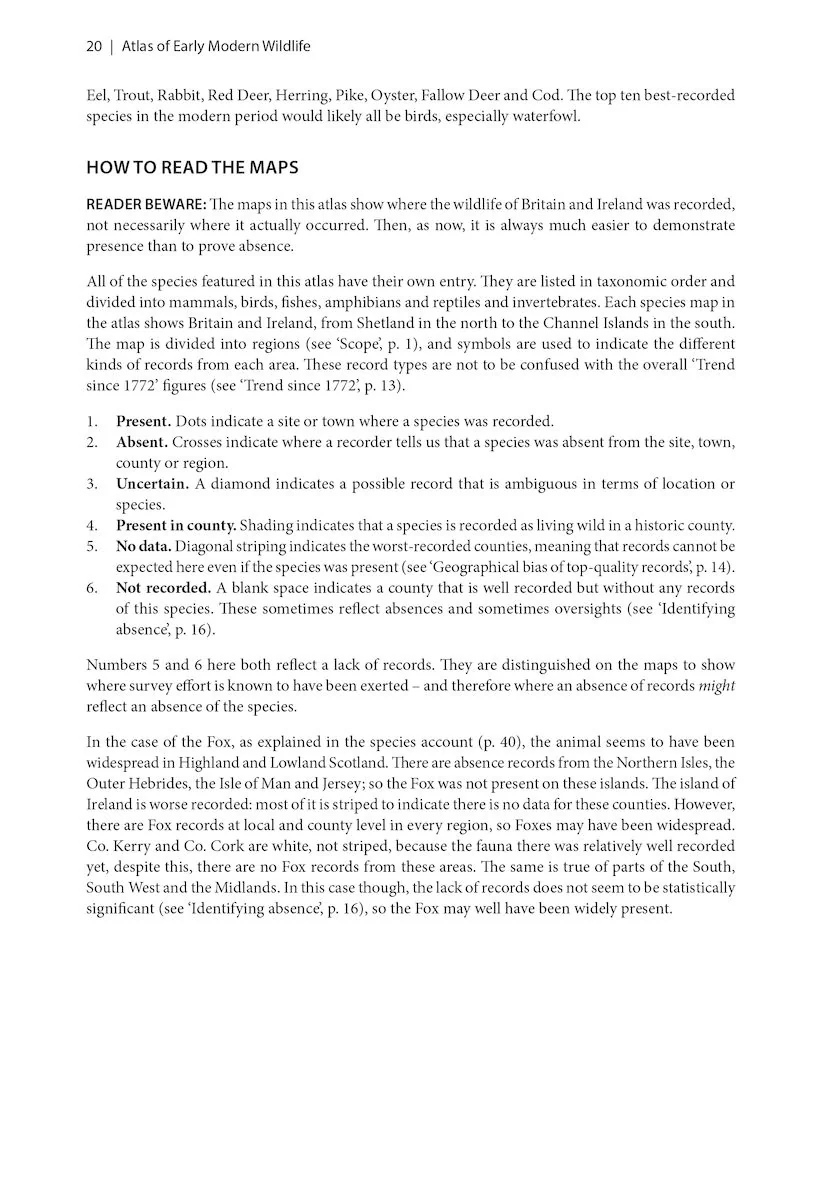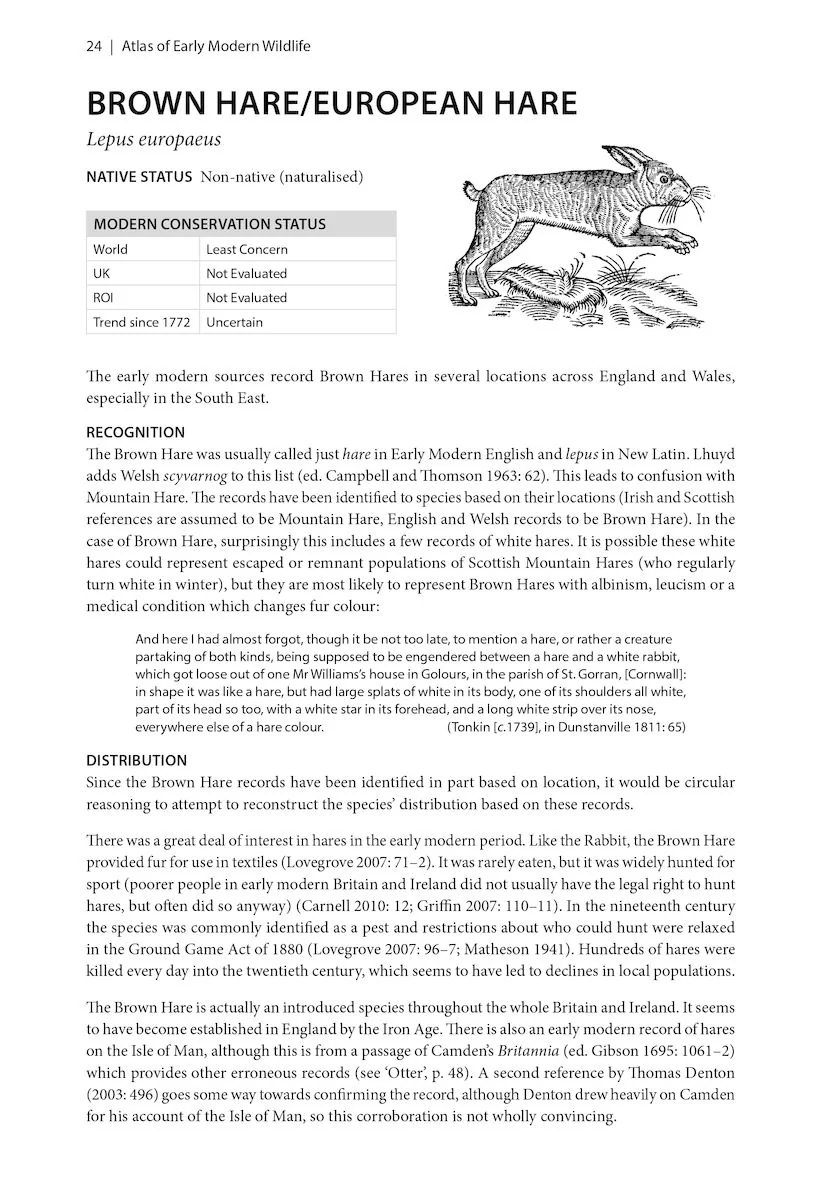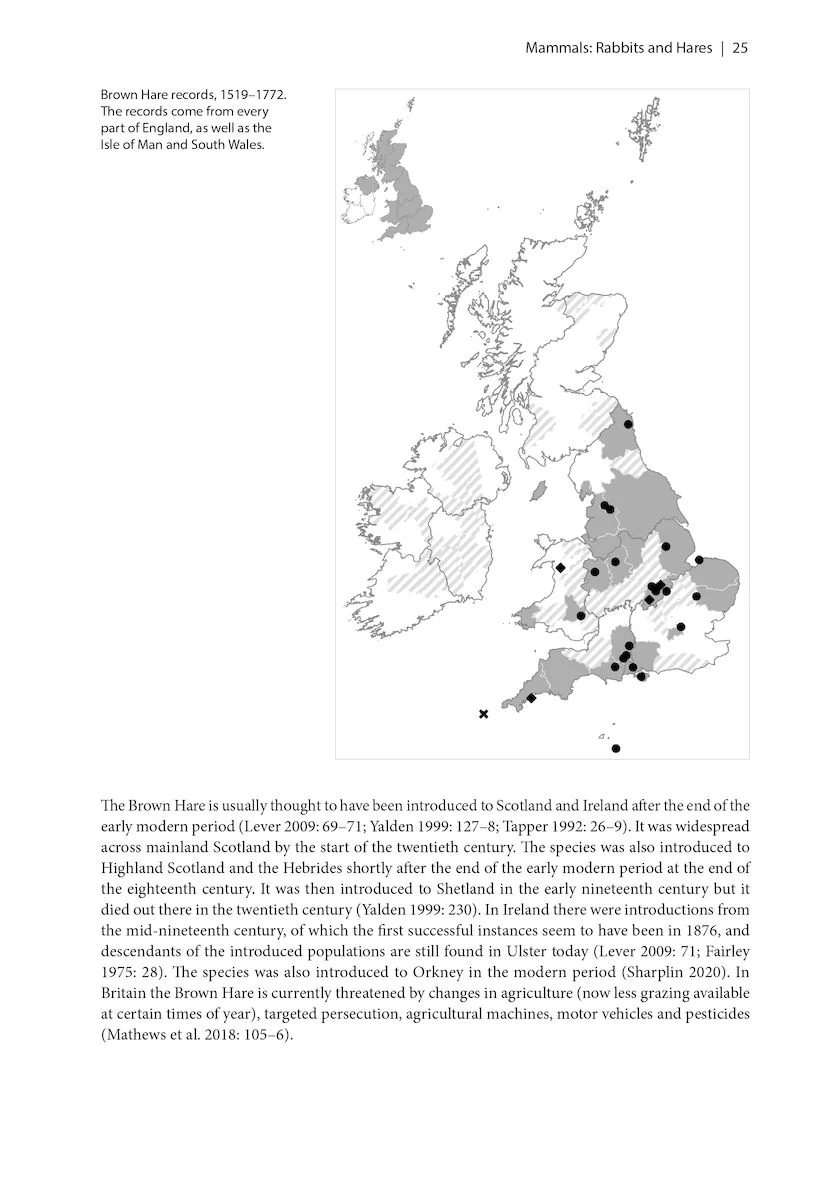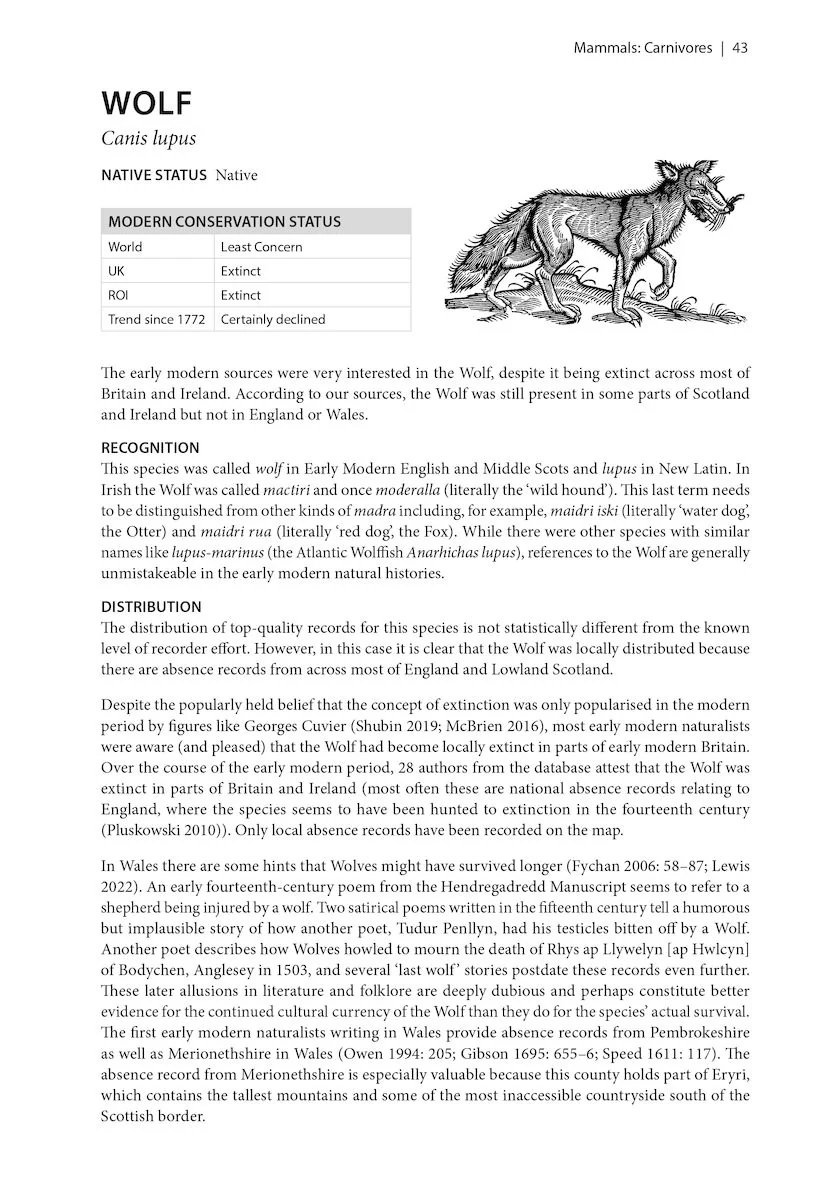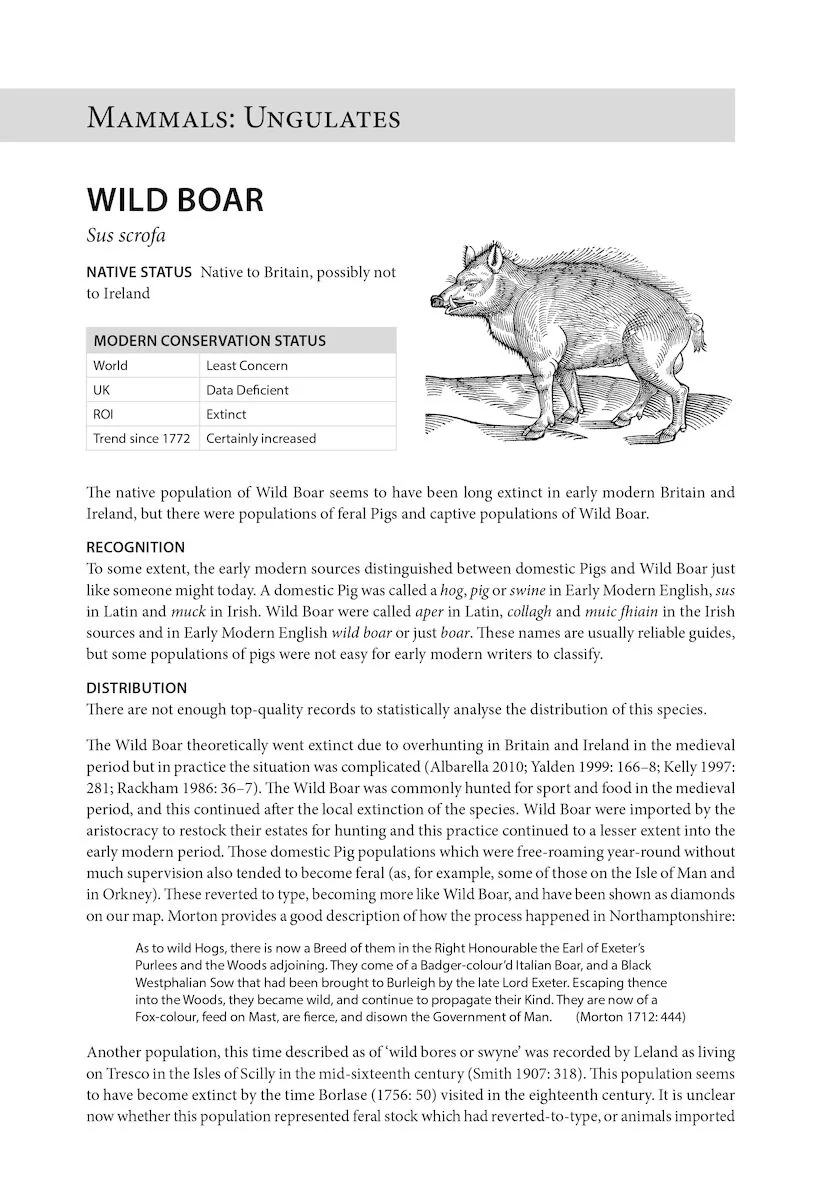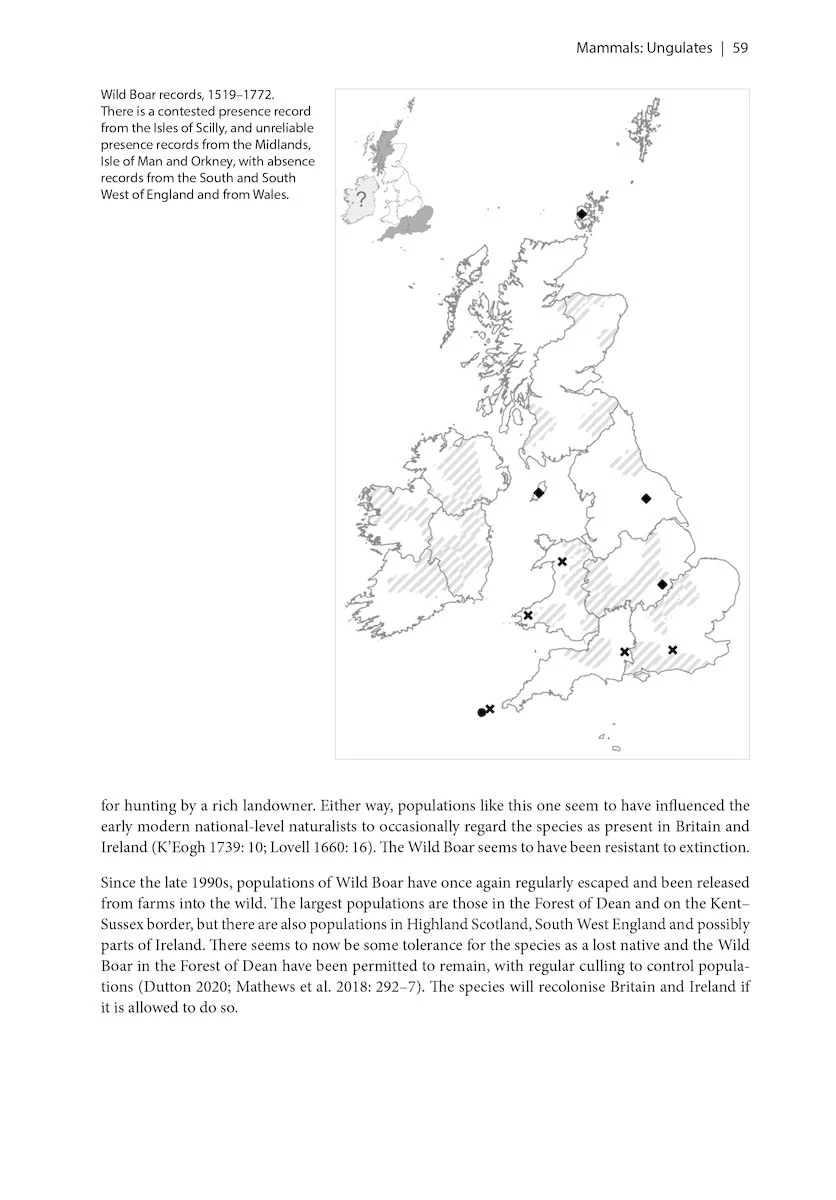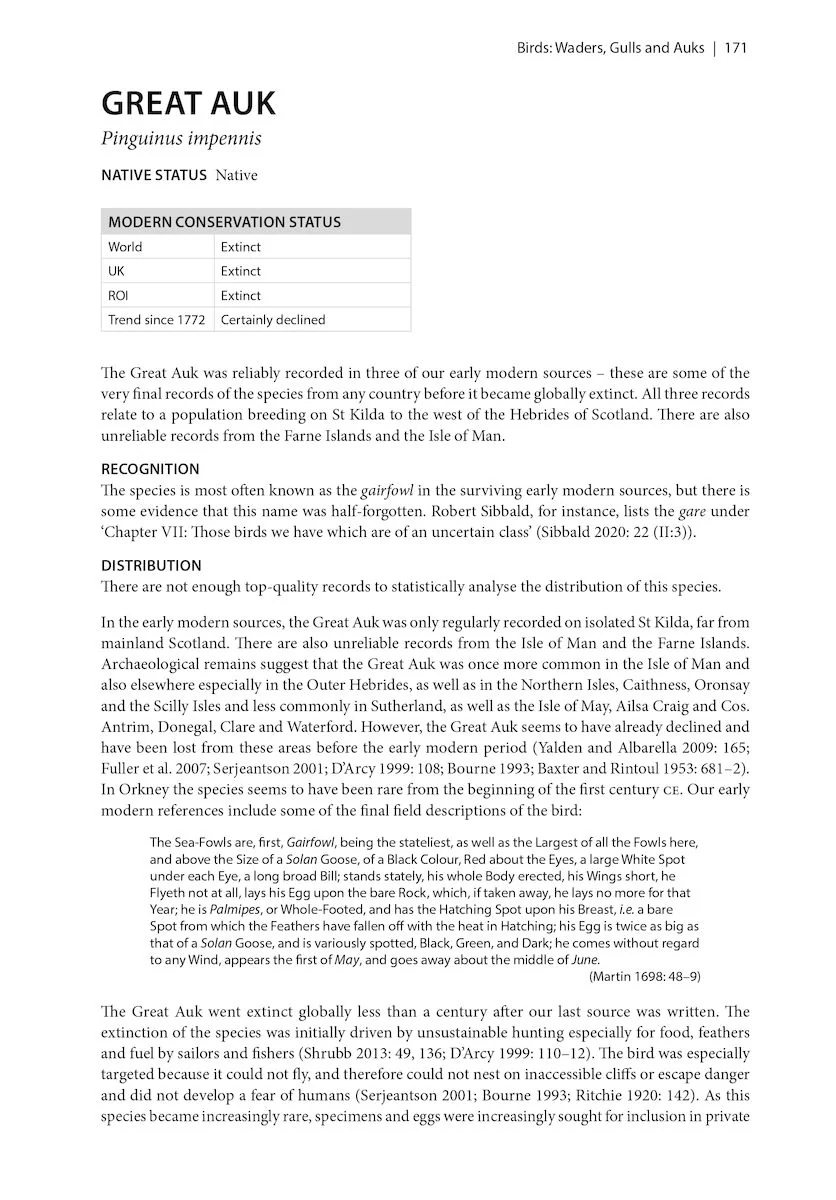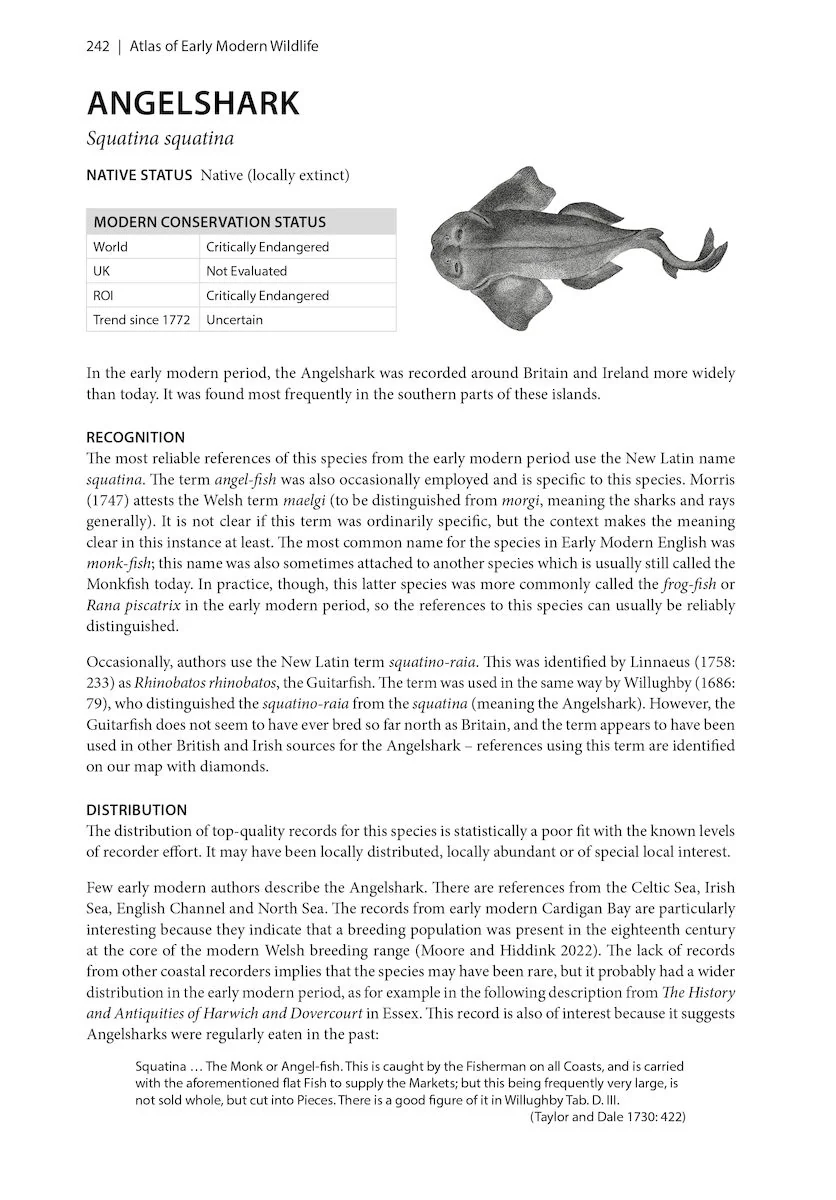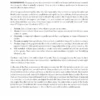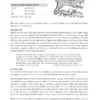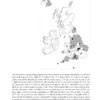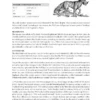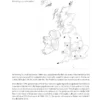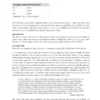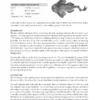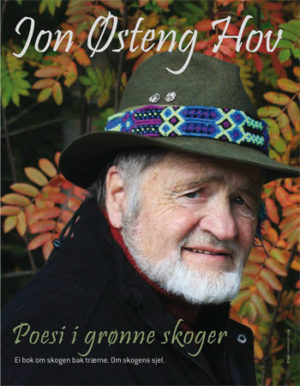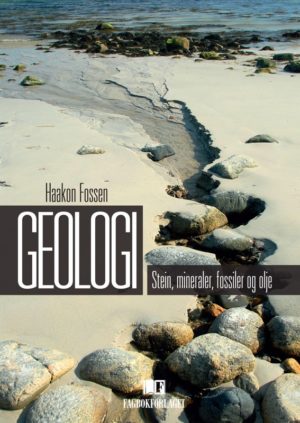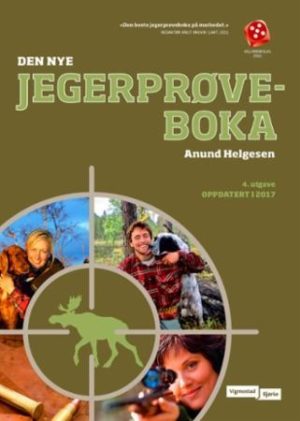- Provides maps and analysis of the early modern distribution of more than 150 species.
- Gathers observations by amateur naturalists, travellers and local historians from the sixteenth to eighteenth centuries for the very first time.
- Derived from over 10,000 records from over 200 primary sources.
Shortlisted for the Marsh Book Award
What was the state of wildlife in Britain and Ireland before modern records began? The Atlas of Early Modern Wildlife looks at the era before climate change, before the intensification of agriculture, before even the Industrial Revolution. In the sixteenth to eighteenth centuries, beavers still swim in the River Ness. Isolated populations of wolves and lynxes linger in the uplands. Sea eagles are widespread around the coasts. Wildcats and pine martens remain common in the Lake District.
In this ground-breaking volume, the observations of early modern amateur naturalists, travellers and local historians are gathered together for the very first time. Drawing on over 10,000 records from across Britain and Ireland, the book presents maps and notes on the former distribution of over 150 species, providing a new baseline against which to discuss subsequent declines and extinctions, expansions and introductions. A guide to identification describes the reliable and unreliable names of each species, including the pre-Linnaean scientific nomenclature, as well as local names in early modern English and, where used in the sources, Irish, Scots, Scottish Gaelic, Welsh, Cornish and Norn.
Raising a good number of questions at the same time as it answers many others, this remarkable resource will be of great value to conservationists, archaeologists, historians and anyone with an interest in the natural heritage of Britain and Ireland.
